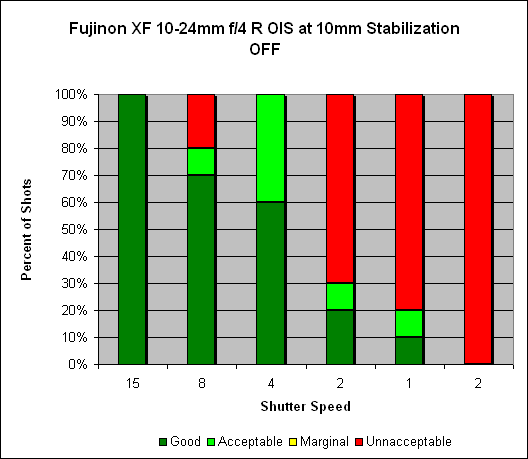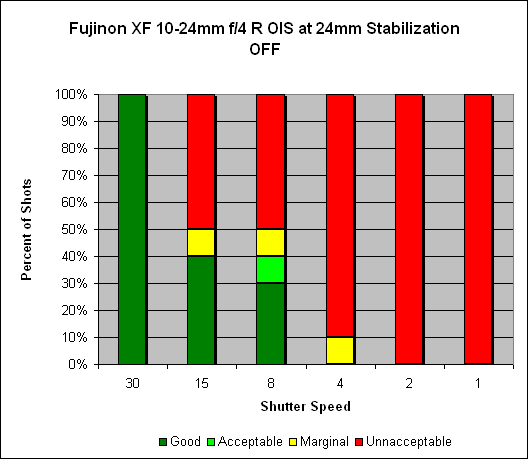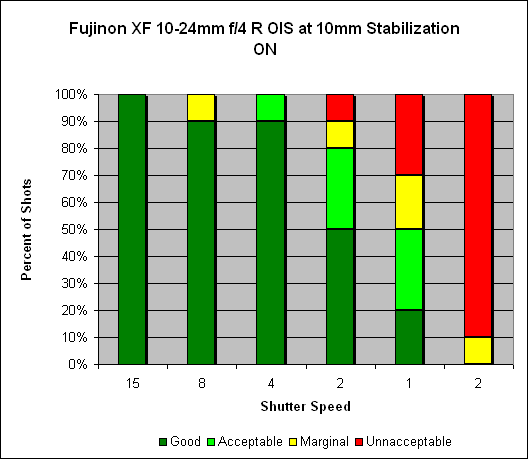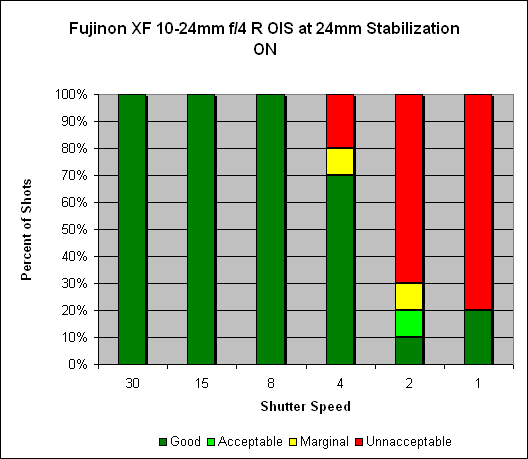Most people tend to think of image stabilization as being mainly for telephoto lenses. While it's true that their longer focal lengths tend to magnify the effects of camera shake, image stabilization can provide a very useful assist at wider angle focal lengths as well; anyone who's ever tried to blur the image of a waterfall, while keeping the surrounding landscape tack-sharp knows exactly what I'm talking about.
You don't generally see optical image stabilization on wide-angle lenses, much less ultrawide-angle, simply because you can already shoot at pretty slow shutter speeds and get sharp results. That said, it's a useful feature, and probably better to have it than not.
At 10mm, we see around two stops of improvement. With OIS turned off, we see 100% sharp shots at the 1/15 shutter speed, and 70% at 1/8s (the rule of thumb suggests the average shooter will get 100% stable shots at 1/10s at the 10mm focal length). With OIS activated, this turns into 90% sharp shots at 1/8 and 1/4s respectively.
 |
| Mouse over this chart to show results with IS activated. |
Zoomed in to 24mm, we also see two stops of improvement. Without OIS, we see 100% sharp shots at the 1/30 shutter speed; with OIS engaged, we have 100% sharp shots at speeds as slow as 1/8s (and 70% sharp at 1/4s).
 |
| Mouse over this chart to show results with IS activated. |
IS systems tend to provide more benefit to less-stable shooters than very steady ones, so most users will see the same or greater amounts of shake reduction as we measured here. You can read more about our IS test methodology here: SLRgear IS Test Methodology, v2.

